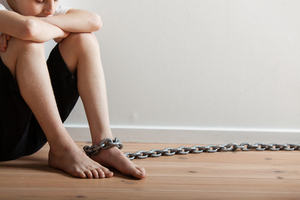Minors in Custody – Solitary Confinement

Solitary confinement has historically been used as a punishment in prison facilities and a way to handle unruly or disobedient prisoners. Extended periods of isolation have been shown to cause significant psychological distress in adult prisoners and this practice is even more devastating on youth in juvenile detention facilities. Minors are placed in solitary confinement as a way of discipline, behavior control and sometimes even for administrative convenience. This practice, which involves isolating minors in small cells between 22 and 24 hours a day, has been shown to cause significant neurological and psychological damage, and can even lead to suicide in the most serious cases.
Psychological Effects of Solitary ConfinementSolitary confinement can be especially damaging to youth because the brain grows and develops during one’s adolescent and teenage years, specifically the frontal lobe region which is responsible for cognitive processing, impulse inhibition and consideration of consequences. Solitary confinement can trigger depression, hallucinations, anxiety attacks, obsessive thinking, paranoia and anger in youthful offenders. In fact, even a few days in solitary confinement has been shown to shift a minor’s EEG patterns towards abnormal patterns associated with stupor and delirium.
There are approximately 70,000 juveniles detained in the United States at any given time and 63% of those have committed nonviolent offenses. A recent study has indicated that 35 percent of youth offenders are held in isolation at some point and more than half of those in solitary confinement were there for more than 24 hours at a time. When children are placed in solitary confinement, they are deprived of mandatory rehabilitative and educational programming and instead suffer devastating psychological damage caused by extended periods of isolation.
Half of all suicides occurring in juvenile facilities occurred while the minor was in solitary confinement and 62 percent of those who committed suicide had a history of being placed in isolation.
Use of Protective Solitary ConfinementNot all youth who are placed in solitary confinement are there for behavioral or disciplinary purposes. Despite the dangers of solitary confinement on minors, detention facilities will place “at risk” youth in protective solitary custody to limit the threat of physical or sexual violence. The Prison Rape Elimination Act places certain requirements on how youthful inmates are to be kept separate from adult offenders. Many states lack the resources to provide separate facilities and instead will place minors in solitary confinement to comply with PREA.
Action Against Youthful Solitary ConfinementAs the issue of solitary confinement in juvenile detention facilities has received increased national attention, many organizations and authorities have taken steps to limit or stop the use of this practice. New York City mayor Bill DiBlasio has sought a ban of solitary confinement in Rikers Island for all detainees who are 21 or younger. In addition, President Obama banned the use of solitary confinement for juveniles in the federal prison system. While this decision was seen as largely symbolic, as there are less than 30 juveniles affected, it was intended to set an example for state and local authorities. The American Civil Liberties Union has initiated a campaign called “No Child Left Alone” to stop the use of solitary confinement in juvenile facilities.
In addition to the ACLU, groups such as the National Religious Campaign Against Torture, Amnesty International, and Solitary Watch have all brought attention to the dangers posed by the use of solitary confinement for youthful offenders. Organizations dedicated to juvenile justice reform, including the Campaign for Youth Justice, the Campaign for Fair Sentencing of Youth and the Children’s Law Center, have stressed the importance of ending youth solitary confinement. New legislation is being considered in California, Colorado, and Nebraska to significantly limit the use of solitary confinement in juvenile detention facilities and the National Council of Juvenile and Family Court Judges and the American Academy of Pediatrics have voiced their support of the movement to end the use of juvenile solitary confinement.
 Child Criminal Safety Center Home
Child Criminal Safety Center Home